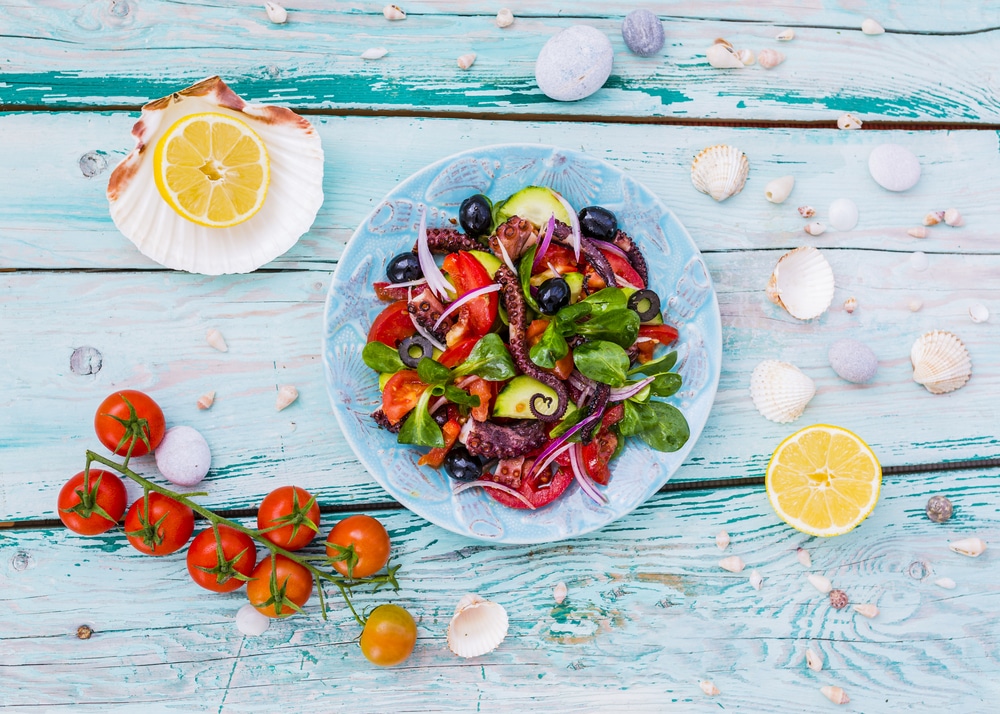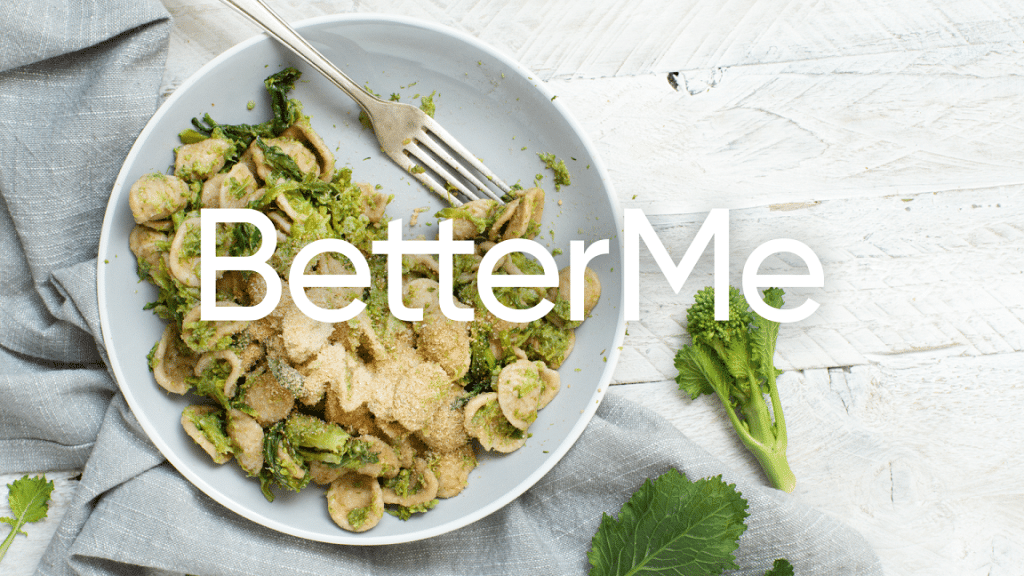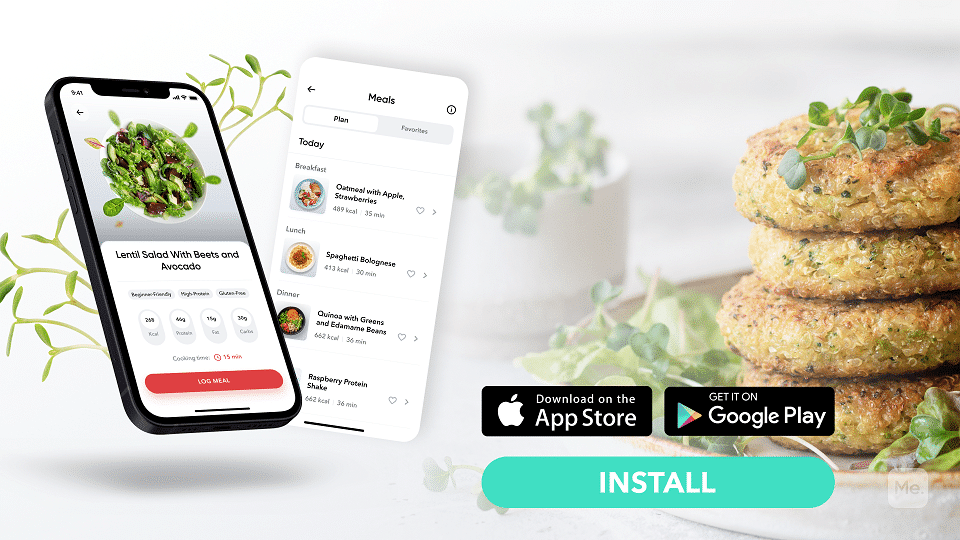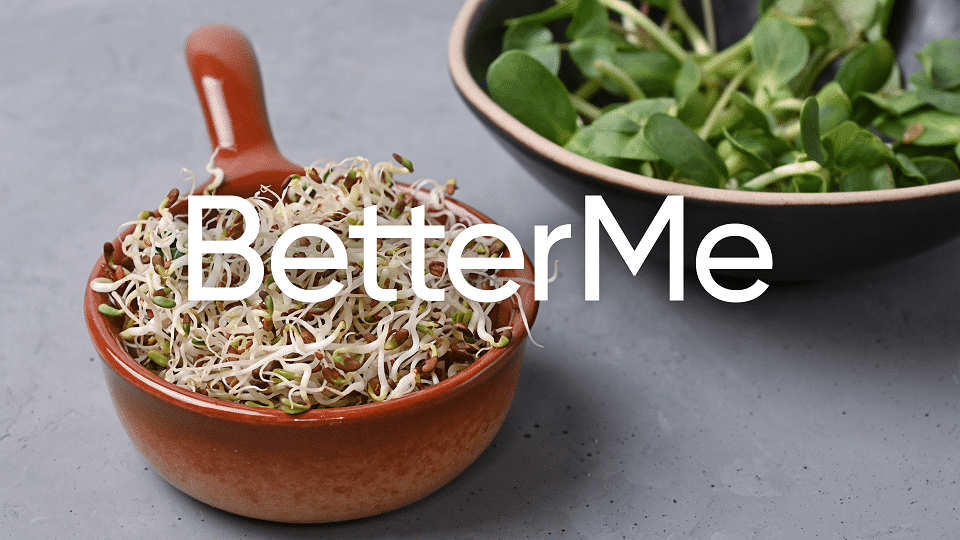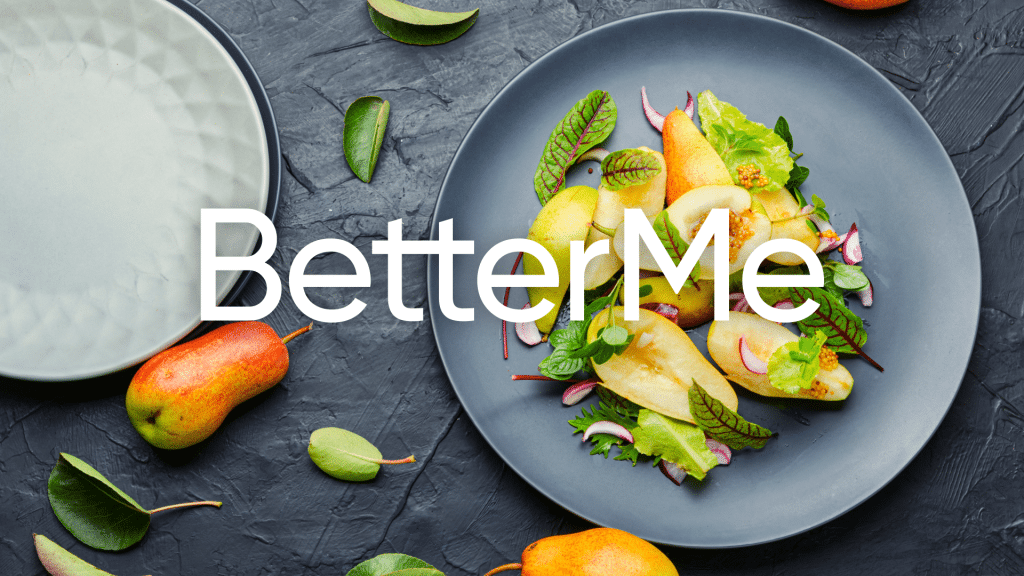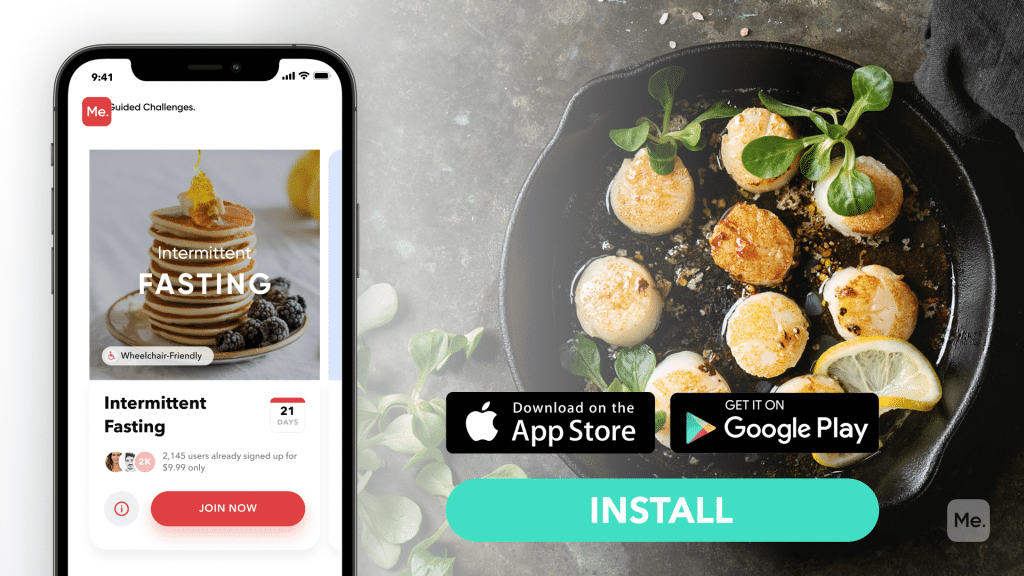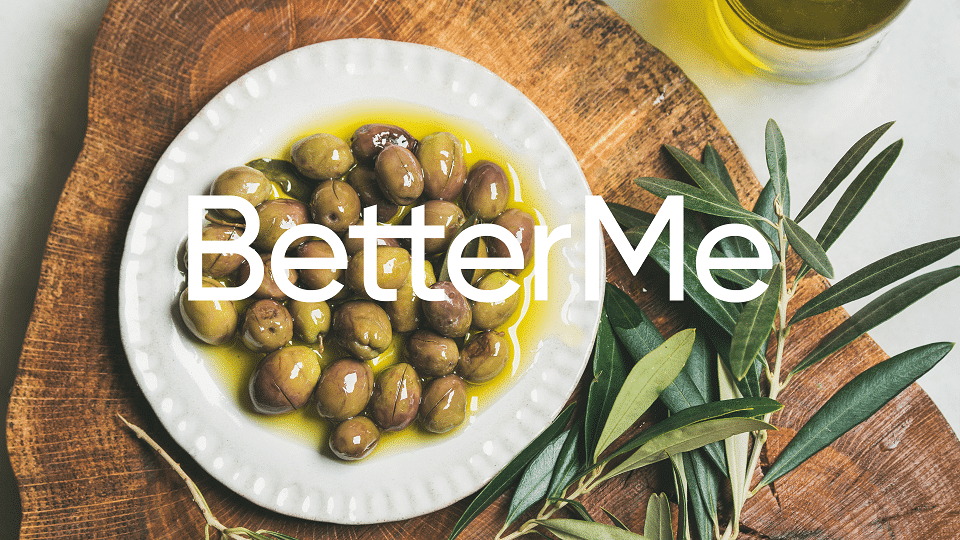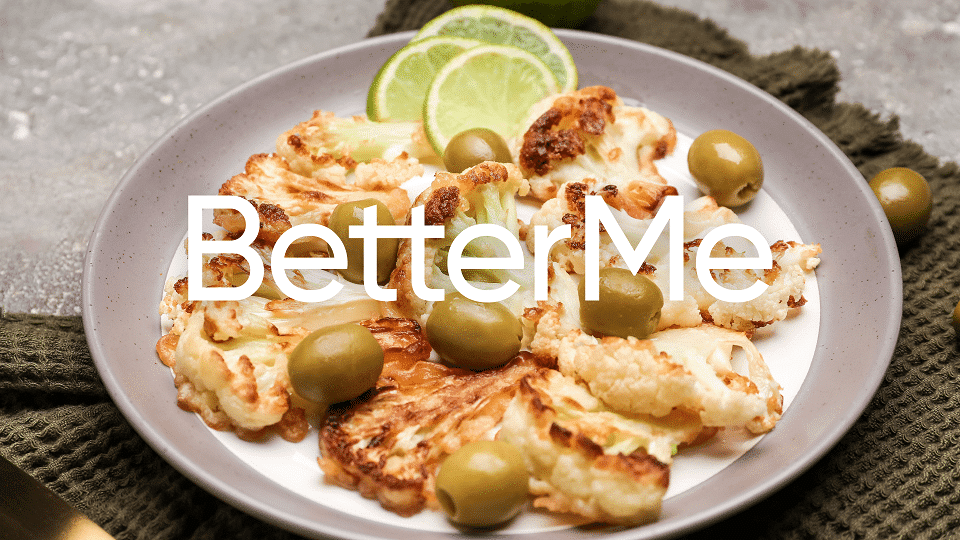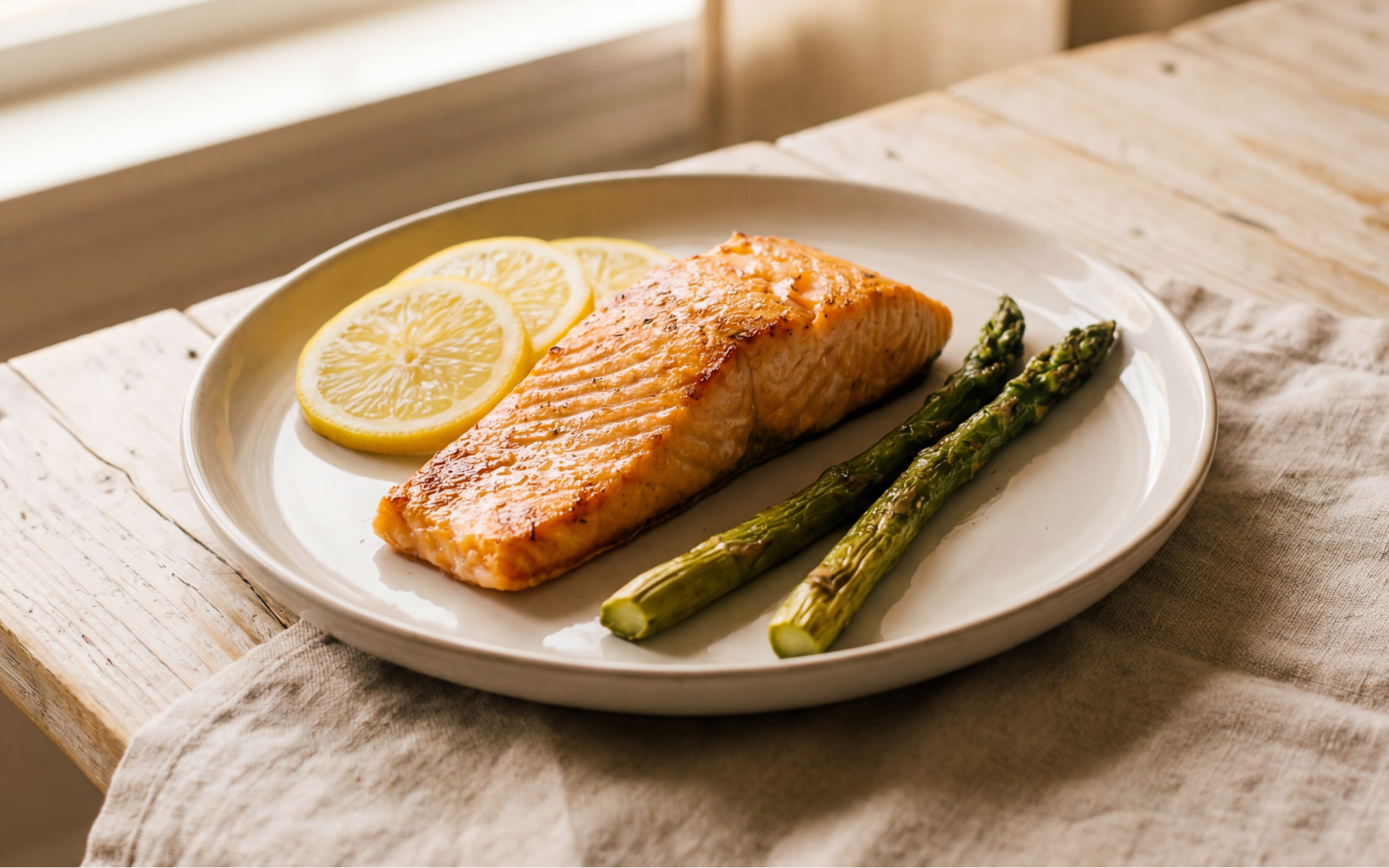To many, the name “Sonoma” brings to mind beautiful rolling hillsides blanketed in grapevines, and they would be right. The Sonoma diet is named for the Sonoma Valley in California, renowned for its picturesque landscapes and world-class wines.
But the Sonoma Diet is more than just a pretty face. This eating plan was developed by dietitian Connie Guttersen and is based on the principles of the Mediterranean diet (12). The Sonoma diet focuses on whole, unprocessed foods like fruits, vegetables, lean proteins, and healthy fats.
Let’s get into the basics of this healthy way of eating, including a detailed look at the Sonoma diet food list.
What Is The Sonoma Diet Claim?
The Sonoma diet is built around the concept of “wine country cuisine.” This means eating foods that are common in the Mediterranean region, where people have been known to live long and healthy lives.
This diet is built on 10 “power foods” that are thought to promote weight loss and good health. These foods are whole grains, almonds, bell peppers, tomatoes, broccoli, grapes, spinach, blueberries, strawberries, and olive oil.
The Sonoma diet is generally lower in calories and carbs than the average American diet, and it’s also higher in healthy fats and fiber. This combination is thought to promote weight loss by keeping you feeling full and satisfied after meals.
Read More: The Gluten-Free Mediterranean Diet: How It Works, Benefits, And Tips For Getting Started
How Does The Sonoma Diet Work?
The Sonoma diet is divided into three phases:
Wave 1
The Quickstart phase is designed to help you lose up to 10 pounds in the first 2 weeks. During this phase, you’ll eat mostly Sonoma diet foods from the power food list. You’ll also be allowed 1 glass of wine per day.
Wave 2
The Lifestyle phase is where you’ll start to add more variety to your diet. You’ll still eat mostly Sonoma diet foods, but you’ll be able to add in 1-2 servings of whole grains, lean protein, and healthy fats per day. You can also have up to 2 glasses of wine per day during this phase.
Wave 3
The Maintenance phase is the final stage of the diet, and it’s where you’ll find your lifelong eating plan. You’ll be able to eat anything from the Sonoma diet food list, as well as other healthy foods that you enjoy.
The goal of this phase is to help you maintain your weight loss for the long term.
What Can You Eat On The Sonoma Diet?
Aside from power foods, there are a few other food groups that are staples of the Sonoma diet. These include:
Lean Proteins
Lean protein sources are low in unhealthy saturated fats and high in nutrients like iron and zinc (6). Good options include skinless chicken, fish, tofu, legumes, and eggs.
Dairy Products
A few dairy products are permissible on the Sonoma diet, including low-fat milk, cheese, and yogurt. Just be sure to choose dairy products that are low in added sugar and calories.
Whole Grains
Whole grains are a good source of fiber, which is important for promoting regularity and keeping you feeling full after meals (2). Good choices include whole-wheat bread, oatmeal, brown rice, and quinoa.
Low-Starch Vegetables
These vegetables are lower in carbs than starchy options like potatoes and corn. They’re a good source of vitamins, minerals, and antioxidants (3). Good choices include broccoli, Brussels sprouts, cabbage, and kale.
Those with more starch like sweet potatoes, Irish potatoes, and peas should only be eaten in moderation in the third wave.
Nuts And Nut Oils
Nuts and nut oils are a good source of healthy fats, protein, and fiber. They’re also high in vitamins and minerals like magnesium, copper, and manganese (4). Good choices include almonds, hazelnuts, walnuts, and pecans.
Olive Oil
Like nuts and nut oils, olive oil is a good source of healthy fats. It’s also high in antioxidants and has been linked to health benefits like reduced inflammation and lower blood pressure (15).
It’s a staple of the Mediterranean diet, used in salad dressings, as a dip, and to cook with.
Wine
You can have up to 2 glasses of wine per day on the Sonoma diet. Red wine is generally considered the healthiest choice, but white wine is also allowed. Just be sure to opt for dry wines which are low in sugar.
Reasons why BetterMe is a safe bet: a wide range of calorie-blasting workouts, finger-licking recipes, 24/7 support, challenges that’ll keep you on your best game, and that just scratches the surface! Start using our app and watch the magic happen.
What You Cannot Eat On The Sonoma Diet
The Sonoma Diet is a low-carb diet, which means that you’ll need to limit your intake of sugary foods and refined carbs like white bread and pasta. You’ll also need to avoid processed meats like bacon and sausage, as well as unhealthy fats like butter and margarine.
Here is a list of foods to avoid on the Sonoma Diet:
- Sugar: candy, cookies, cake, honey, syrup
- Refined carbs: white bread, white pasta, white rice, crackers
- Processed meats: bacon, sausage, deli meat
- Unhealthy fats: butter, margarine, vegetable shortening, fatty meats
The Sonoma Diet also recommends avoiding alcohol during the first 2 weeks of the diet. After that, you can have up to 2 glasses of wine per day. However, keep in mind that most countries’ health guidelines recommend limiting alcohol consumption to 1 serving (i.e. 1 glass of wine) per day for women, and 2 for men.
Other Guidelines For Healthy Living
The Sonoma diet also includes a few other guidelines that are designed to promote weight loss and good health. These include:
Eating Slowly And Mindfully
Eating slowly gives your body time to register that you’re full, which can help you eat less overall. This allows you to savor your food and enjoy the experience of eating (9).
Portion Control
You don’t have to count calories, carbs, or fat grams on this diet. However, it’s still important to be mindful of portion sizes. The Sonoma Diet recommends having the following plate sizes:
- A bowl that holds 2 cups of liquid
- A 7-inch plate
- A 9-inch plate
Your food is measured according to these guidelines and you can eat until you’re comfortably full.
Limiting Processed Foods
Highly processed foods are high in unhealthy ingredients like added sugar, salt, and unhealthy fats. They’re also low in important nutrients like fiber and protein (14). The Sonoma diet recommends limiting processed foods as much as possible.
Exercising Regularly
Regular exercise is an important part of any weight loss plan. It helps to burn calories and promote good health (13). The Sonoma diet recommends getting at least 30 minutes of moderate intensity exercise per day.
Sample Meal Plan
Here’s a sample meal plan for the Sonoma Diet:
Day 1
- Breakfast: Oatmeal with sliced almonds and berries
- Lunch: Grilled chicken salad with olive oil and balsamic vinegar
- Dinner: Salmon with roasted Brussels sprouts and sweet potato
- Snacks: Hummus with veggies, hard-boiled egg, a handful of nuts
Day 2
- Breakfast: Scrambled eggs with veggies
- Lunch: Turkey sandwich on whole-wheat bread with mustard and pickles
- Dinner: Beef stir-fry with broccoli and snow peas
- Snacks: Sliced fruit with yogurt, carrot sticks with hummus, apple with peanut butter
Day 3
- Breakfast: Blueberry smoothie
- Lunch: Tuna salad with whole-wheat crackers
- Dinner: Chicken and veggie soup
- Snacks: Cottage cheese with fruit, celery sticks with peanut butter, yogurt with granola
As you can see, the Sonoma Diet includes a variety of healthy foods. There’s no need to worry about being hungry on this diet, as you can eat until you’re comfortably full.
This diet is also easy to follow, as there are no difficult rules to remember. You can even enjoy a glass of wine with your meals, depending on which wave you’re on.
Read More: The Mediterranean Diet Pyramid: Use This To Start A Heart-Healthy Way Of Eating
Is The Sonoma Diet The Same As The Mediterranean Diet?
The Sonoma Diet has many similarities to the Mediterranean Diet, which is one of the most popular diets in the world. Both are based on eating healthy, whole foods and limiting processed foods and unhealthy fats.
Both diets also emphasize fresh fruits and vegetables, lean protein, and healthy fats like olive oil.
So, What’s The Difference Between These Two Diets?
The Sonoma Diet is a weight loss program that’s based on the Mediterranean way of eating, but with a few key differences. For example, the Sonoma Diet recommends eating three meals and two snacks each day, while the Mediterranean Diet doesn’t have a set meal plan.
Another difference is that the Sonoma Diet focuses on ten “power foods” that are especially high in antioxidants and other nutrients. These power foods include tomatoes, whole grains, nuts, and berries.
The Mediterranean Diet doesn’t have a specific list of power foods but emphasizes eating a variety of healthy foods from all food groups (7).
Knowing all this, which diet is right for you? That depends on your individual goals and preferences. If you’re looking for a weight loss plan with specific meal plans and guidelines, the Sonoma Diet may be a good choice.
But if you prefer to have more flexibility in your eating, the Mediterranean Diet may be a better option. Either way, you can’t go wrong with either of these healthy, delicious diets!
Benefits Of The Sonoma Diet
Several factors make this diet a good choice:
Simple And Practical
The Sonoma Diet is based on simple, practical principles that are easy to follow. There’s no need to count calories or measure portion sizes. You can also eat out at restaurants and still stick to the diet.
Encourages A Healthy Relationship With Food
This diet helps you to develop a healthy relationship with food. You learn to listen to your body’s hunger cues and eat only when you’re truly hungry. This can help to prevent overeating and binge eating as well (5).
Focuses On Healthy, Whole Foods
The Sonoma Diet is based on eating healthy, whole foods. This includes plenty of fresh fruits and vegetables, lean protein, and healthy fats. These foods are not only nutritious but also delicious!
Promotes Weight Loss
The Sonoma Diet can help you to lose weight in a healthy way. The diet is based on eating healthy, whole foods and limiting processed foods and unhealthy fats (1).
Plus, the fact that you’re eating frequently throughout the day can help to boost your metabolism and promote weight loss.
May Improve Heart Health
The Sonoma Diet may also help improve heart health. This is because the diet is based on eating healthy, whole foods and limiting processed foods and unhealthy fats.
Plus, the diet encourages you to eat plenty of fruits and vegetables, which are high in fiber and antioxidants. These nutrients can help to reduce cholesterol and blood pressure and improve heart health (10).
BetterMe app will provide you with a host of fat-frying fitness routines that’ll scare the extra pounds away and turn your body into a masterpiece! Get your life moving in the right direction with BetterMe!
Drawbacks Of The Sonoma Diet
Every diet has its pros and cons, and the Sonoma Diet is no exception. Here are a few potential drawbacks of this diet:
It May Be Difficult To Stick To Long-Term
The Sonoma Diet may be difficult to stick to long-term, as it requires you to eat frequently throughout the day. This can be tough to do if you have a busy schedule.
Carb Crash
The Sonoma Diet may cause a “carb crash” if you’re not used to eating frequent meals. This happens when your blood sugar drops after eating carbohydrates. Symptoms of a carb crash include fatigue, irritability, and headaches (11).
May Be Expensive
The Sonoma Diet may be expensive, as it recommends eating fresh and healthy foods. This can be tough on your budget, especially if you’re used to eating processed convenience foods.
The Bottom Line
The Sonoma diet is a healthy eating plan that may help you lose weight and improve your overall health. It’s based on the Mediterranean diet, which is known for its many health benefits. The diet includes three phases, each of which has its food list.
The first two phases are designed for weight loss, while the third phase is focused on maintenance. The Sonoma diet also includes a few other guidelines, like eating slowly and limiting processed foods.
If you’re looking to lose weight and improve your health, the Sonoma diet may be a good option for you.
DISCLAIMER:
This article is intended for general informational purposes only and does not serve to address individual circumstances. It is not a substitute for professional advice or help and should not be relied on for making any kind of decision-making. Any action taken as a direct or indirect result of the information in this article is entirely at your own risk and is your sole responsibility.
BetterMe, its content staff, and its medical advisors accept no responsibility for inaccuracies, errors, misstatements, inconsistencies, or omissions and specifically disclaim any liability, loss or risk, personal, professional or otherwise, which may be incurred as a consequence, directly or indirectly, of the use and/or application of any content.
You should always seek the advice of your physician or other qualified health provider with any questions you may have regarding a medical condition or your specific situation. Never disregard professional medical advice or delay seeking it because of BetterMe content. If you suspect or think you may have a medical emergency, call your doctor.
SOURCES:
- A Whole Food Plant-Based Diet Is Effective for Weight Loss: The Evidence (2020, ncbi.nlm.nih.gov)
- Dietary Fibre from Whole Grains and Their Benefits on Metabolic Health (2020, mdpi.com)
- Health Benefits of Fruits and Vegetables (2013, academic.oup.com)
- Health Benefits of Nut Consumption (2010, mdpi.com)
- Intuitive eating is inversely associated with body weight status in the general population‐based NutriNet‐Santé study (2016, onlinelibrary.wiley.com)
- Lean meat and heart health (2005, pubmed.ncbi.nlm.nih.gov)
- Mediterranean Diet and Cardiodiabesity: A Systematic Review through Evidence-Based Answers to Key Clinical Questions (2019, mdpi.com)
- Mediterranean diet and life expectancy; beyond olive oil, fruits, and vegetables (2016, ncbi.nlm.nih.gov)
- Mindful Eating: The Art of Presence While You Eat (2017, diabetesjournals.org)
- Plant‐Based Diets Are Associated With a Lower Risk of Incident Cardiovascular Disease, Cardiovascular Disease Mortality, and All‐Cause Mortality in a General Population of Middle‐Aged Adults (2019, ahajournals.org)
- Review article Sugar rush or sugar crash? A meta-analysis of carbohydrate effects on mood (2019, sciencedirect.com)
- The Mediterranean Diet: From an Environment-Driven Food Culture to an Emerging Medical Prescription (2019, mdpi.com)
- The Role of Exercise and Physical Activity in Weight Loss and Maintenance (2015, ncbi.nlm.nih.gov)
- Ultra-Processed Foods and Health Outcomes: A Narrative Review (2020, mdpi.com)
- Virgin Olive Oil and Health: Summary of the III International Conference on Virgin Olive Oil and Health Consensus Report, JAEN (Spain) 2018 (2019, mdpi.com)
